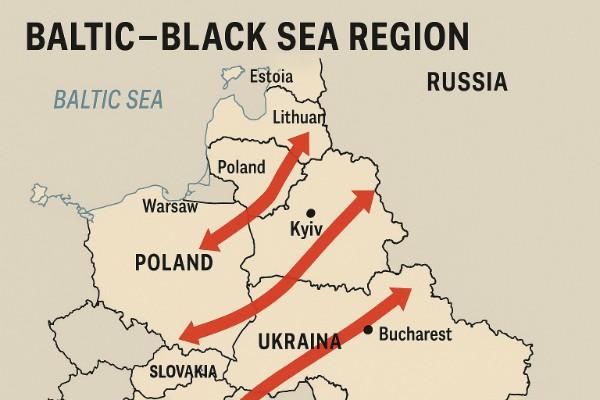“Humanity cannot survive a sequel to [the movie] Oppenheimer. Voice after voice, alarm after alarm, survivor after survivor is calling the world back from the brink.” António Guterres said in his opening remarks at a rare UN Security Council meeting chaired by Japan on nuclear disarmament and non-proliferation on March 18, 2024. This took place after a US official warned that Russia had launched a weapon into space, which the White House subsequently verified but stated posed no imminent threat. During the meeting, the United States and Japan introduced a resolution asking for a prohibition on nuclear weapons in outer space. It reiterates one of the primary concerns on the Conference on Disarmament’s agenda is the prevention of an arms race in space, known as PAROS (Prevention of Arms Race in Outer Space). Although CD worked hard to find a consensus on PAROS, pioneer states in space technology were not as enthusiastic.
The recent call for restraint on space weaponization arose in response to worries about a possible Russian deployment of nuclear weapons in space or the potential development of a nuclear-capable anti-satellite weapon that could potentially target the Starlink constellations of satellites due to its support of Ukrainian forces against Russia. As global dynamics are altering and different wars erupt throughout the world, including the Russia-Ukraine War, governments become increasingly embroiled in weapons competitions. Space is one of the areas where many countries want to establish a presence and use it for military objectives. Though there has never been a restriction on utilizing space for military reasons; nevertheless, during the Cold War, there have been several agreements prohibiting the weaponization of space. However, as the globe transitions to a multi-polar system, there is an urgent need for a consensus among all major countries about the peaceful utilization of space; otherwise, the space race would have catastrophic ramifications for all nations.
There is a subtle distinction between militarization and weaponization of space, and the latter is fundamentally different from the former. Space militarization refers to the use of space for military reasons such as information collection, communication, navigation, reconnaissance, and surveillance. In short, space militarization refers to the employment of space-based technology to improve military capabilities on Earth. In contrast, Space Weaponization refers to the development and deployment of weapons in space. It entails the use of space-based platforms like satellites and space stations to launch offensive or defensive weapons systems. Space weaponization includes developing anti-satellite weapons, kinetic energy weapons, laser weapons, and other weapons capable of destroying or disabling satellites or other space-based assets.
The idea of space militarization and weaponization is not new. As soon as humanity was able to explore space, they recognized its potential for military purposes. Human nature dictates that any technical advancement must be utilized for military or political goals. Nuclear weapons provide a clear example of this; chain reactions were employed to generate tremendous amounts of energy. However, it culminated in the development of the most lethal weapon the human race has ever seen. It was carried out to benefit humanity, but as is customary, human beings turned it into a weapon. The space race began in the early days of the Cold War when the United States and Russia both conducted nuclear weapons tests in space. The most prominent test was Starfish Prime, which released X-ray radiation that destroyed around one-third of the satellites in lower earth orbit at the time.
Realizing the destructive capability of nuclear weapons in space, the leading nations started to work on disarmament efforts, especially not weaponizing space. These efforts yielded results in the form of the Limited Nuclear Test Ban Treaty in 1963, which prohibited nuclear tests or other nuclear explosions underwater, in the atmosphere, or in outer space, and the Outer Space Treaty in 1967 which provided guidelines for the peaceful use of space. For decades, the consensus has been that space should not be weaponized. However, in the twenty-first century, key nations were unable to sustain this agreement and began developing weapons that led to the weaponization of space. China and India both made the list of countries with anti-satellite capabilities in 2007 and 2019, respectively. In addition, the collapse of bilateral accords like as the Anti-Ballistic Missile Treaty has compounded the situation.
Relations between Russia and the United States are at an all-time low, with little chance of recovery in the foreseeable future, according to Kremlin Spokesperson Dmitry Peskov. There is practically no hope of participating in weapons control discussions. Instead, the United States’ steadfast military and financial backing for Ukraine has exacerbated the divide between Washington and the Kremlin. Putin is challenging the US-centered international order, and many observers believe that Russia poses a greater danger to the US unipolar system than China does. As tensions have escalated and the Kremlin has shown a concealed interest in weaponizing space, researchers and arms control and disarmament organizations have become increasingly concerned.
If Russia seeks to obtain nuclear-capable anti-satellite missiles, the repercussions will be terrible not only for the United States and NATO but for the entire globe. There are over 10,000 active satellites, of which approximately 8,000 are in lower earth orbit. If Russia launched a nuclear attack in space, it would utilize a Nuclear Electromagnetic Pulse, and the radiation used to fry the electrons would have an indiscriminate impact on other space installations, including China’s Tiangong Space Station. Back then nuclear tests in space had destroyed one-third of the satellites in LEO, how greater will its impact now be on satellites, connectivity, internet, etc.? It would also have a considerable impact on underdeveloped nations in Africa and Asia, where satellites are used primarily to ensure food security and water management. Moreover, it would affect biodiversity and harm infrastructure.
In a nutshell throughout the Cold War, the Soviet Union and the United States reached several beneficial accords and treaties. However, a multipolar world is gaining traction, making it more difficult to reach an agreement than during the Cold War. Countries have diverse objectives, and there is a trend toward regionalism, in which region-wise states want to pursue their interests, not necessarily residing with other regions’ interests. Diplomacy delivered the required results during the Cold War; whether it will yield the same results today is uncertain. Lastly, any state would weaponize space if all other possibilities were exhausted however, if space is weaponized, it will have a devastating impact on the globe. Therefore, though challenging, it is critical to act sensibly and logically and undertake competent diplomacy to address the PAROS problem in CD, as well as the bilateral and trilateral arrangements among greater powers to secure a peaceful and weapons-free space.

Table of Contents
ToggleMuhammad Huzaifa
The author is a student of Strategic Studies at the National Defence University in Islamabad. He graduated from the Spring School on International Law and is a Millennium Fellow for the class of 2024. He can be reached at huzaifakhanmamooti@gmail.com.













